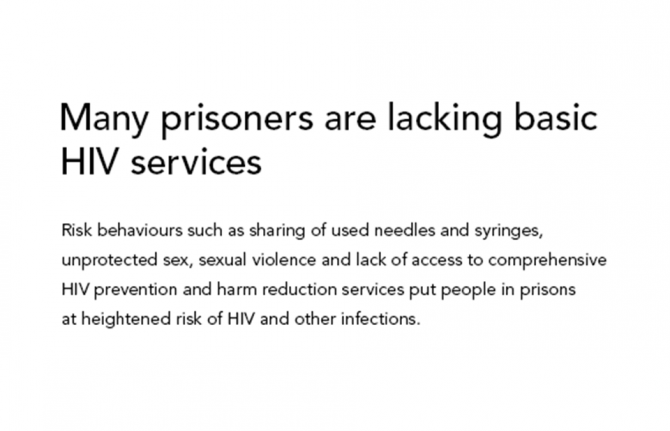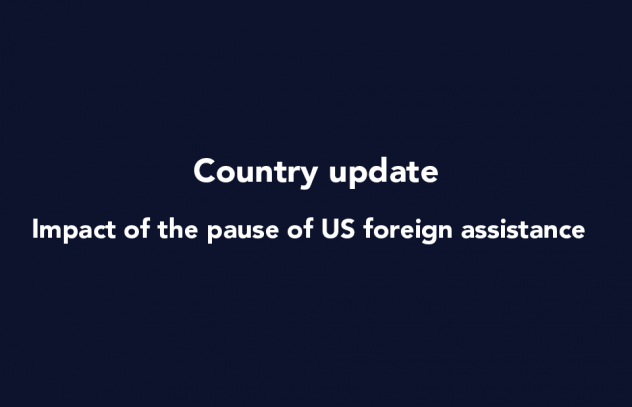


Update
Many prisoners are lacking basic HIV services
28 October 2019
28 October 2019 28 October 2019Environmental, social, cultural, human rights and biological factors all lead to a greatly increased risk of contracting tuberculosis and HIV in prisons.
Risk behaviours such as sharing of used needles and syringes, unprotected sex, sexual violence and lack of access to comprehensive HIV prevention and harm reduction services put people in prisons at heightened risk of HIV and other infections. Globally, HIV prevalence among people in prison is much higher than among the general population, with incarcerated people on average five times more likely to be living with HIV compared with adults outside. Key populations―people who inject drugs, sex workers and, in some countries, transgender people and gay men and other men who have sex men―tend to be overrepresented among incarcerated populations.
Despite the relative ease of reaching people within prisons, HIV services are not provided in prisons in many countries. Across the last three years of country reports to UNAIDS, very few countries reported programme data on the provision of condoms (32 countries), opioid substitution therapy (24 countries) and sterile injecting equipment (three countries) in prisons, but 74 countries reported programme data on antiretroviral therapy coverage and 83 countries reported HIV testing in prisons.
Related
 Government ensures continuity of treatment in Malawi
Government ensures continuity of treatment in Malawi

10 February 2025


